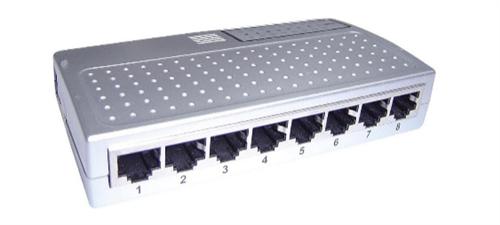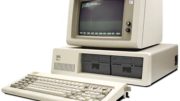Well, other than the fact you can’t really find a network hub anymore.
Once upon a time, network equipment was expensive. Of course today we have great product like our Datatronix Network Switch that’s very inexpensive and very capable. But once upon a time that sort of thing was really costly and you really had to think twice about what you bought.
It was very common for inexpensive network equipment to be called a “hub” not a “switch” and it’s not just a marketing term. There is a real difference, and luckily for you it’s easy to understand.
Imagine an 8-way intersection. I guess it would look a little like a British flag:

So in this intersection, there’s no stop sign, no police officer, just four roads that intersect. It’s up to each car to figure out how to turn, when to stop, and where to go. That’s the basic idea of a hub. It’s a giant free-for-all.
If you think that also sounds like a recipe for disaster and that there would be tons of collisions and everything would be really slow because everyone is afraid of the intersection, you’d be right. That’s exactly what happens with a hub when you use it for networking, and that means everything can slow to a total crawl if you have more than one person using it at a time.
On the other hand it’s much more serene to imagine a switch. A switch looks the same inside but imagine there was some sort of super-stoplight that could sense traffic coming, know where it was going, and intelligently stop and start lanes so everyone got where they were going smoothly. That would be some sort of intersection, I’ll tell you that.
Once upon a time, the logic that it took to make a switch was super expensive and a lot of people relied on hubs because they didn’t really have a choice. Today, hubs have all but disappeared because switches are inexpensive enough that there’s no problem affording them.





